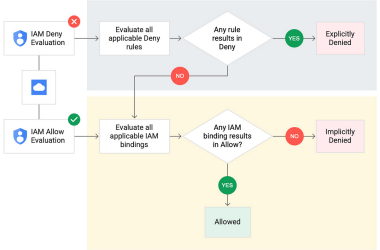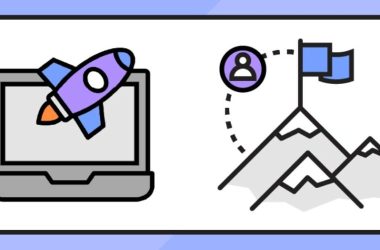I Just Completed Cisco’s Introduction to Cybersecurity Course – Here’s What I Learned 🔐
Over the past few weeks, I dove deep into the world of cybersecurity through Cisco’s Introduction to Cybersecurity course. As someone who believes in learning in public, I wanted to share my key takeaways and reflections from this journey.
Why Cybersecurity Matters (Now More Than Ever)
Before this course, I knew cybersecurity was important, but I didn’t realize just how critical it is at every level:
- Personal Level: Our identities, banking details, and private conversations are all digital now
- Organizational Level: Companies face attacks that could destroy their reputation overnight
- Government Level: National security and economic stability are at stake
The reality? We’re all targets. But knowledge is power, and understanding threats is the first step to protection.
The Concepts That Changed My Perspective
1. The CIA Triad (Not That CIA!)
One of the foundational concepts I learned is the CIA Triad:
- Confidentiality – Keeping information private
- Integrity – Ensuring data isn’t tampered with
- Availability – Making sure authorized users can access what they need
This simple framework now influences how I think about every digital interaction. Is my data confidential? Can I trust its integrity? Will it be available when I need it?
2. You’re Only as Strong as Your Weakest Link
The course highlighted something crucial: most attacks exploit human psychology, not just technology.
Social engineering attacks like phishing and pretexting work because they target our natural instincts to be helpful or our fear of authority. The best firewall in the world can’t protect against someone who gives away their password to a convincing fake email.
This taught me that technical skills alone aren’t enough – security awareness and critical thinking are equally important.
3. The Malware Ecosystem is Terrifyingly Sophisticated
I learned about the different types of malware and was genuinely shocked by how sophisticated they’ve become:
- Ransomware that holds your data hostage
- Rootkits that hide so deep they’re nearly impossible to detect
- Worms that spread automatically without human interaction
💡 Fun fact: The Code Red worm infected 300,000 servers in just 19 hours back in 2001. Imagine what today’s malware can do with faster internet speeds and more connected devices!
4. Defense in Depth is Not Optional
One major lesson: there’s no single “silver bullet” for cybersecurity. Organizations need multiple layers of protection:
- Firewalls
- Intrusion Detection/Prevention Systems (IDS/IPS)
- Encryption
- Access controls
- User training
- Regular backups
Think of it like a medieval castle: walls, moat, guards, and locked doors. If attackers breach one layer, others are there to stop them. 🏰
Practical Changes I’m Making
This course wasn’t just theoretical – it inspired immediate action:
Implemented a password manager – No more reusing passwords!
Enabled Two-Factor Authentication (2FA) on all critical accounts
Started using a VPN on public Wi-Fi
Set up the 3-2-1 backup rule – 3 copies of data, 2 different media types, 1 off-site
Became more skeptical of unsolicited emails and requests
What Surprised Me Most
Penetration testing is a legitimate career! Companies actually hire ethical hackers (white hat hackers) to break into their systems and find vulnerabilities before the bad guys do. The systematic approach – planning, scanning, gaining access, maintaining access, and reporting – is like a puzzle that helps organizations stay secure.
Also, the legal and ethical considerations around cybersecurity are complex. Just because you can hack something doesn’t mean you should. The skills learned must always be used within legal and ethical bounds.
Key Takeaway: Cybersecurity is Everyone’s Responsibility
The biggest lesson? Cybersecurity isn’t just for IT professionals.
Whether you’re a developer, designer, marketer, or manager, you play a role in keeping your organization secure. Every employee is both a potential target and a line of defense.
What’s Next for Me?
This course has sparked a genuine interest in cybersecurity. I’m planning to:
- Continue exploring more advanced Cisco courses
- Practice with hands-on labs and tools
- Stay updated on the latest threats and trends
- Share what I learn with my network
I’m also thinking about how cybersecurity principles apply to my current role. How can I build security awareness into everything I do? How can I advocate for better security practices in my team?
Resources That Helped Me
For anyone interested in starting their cybersecurity journey:
📚 Cisco’s Introduction to Cybersecurity course (free and beginner-friendly!)
Final Thoughts
If you’re on the fence about exploring cybersecurity, I encourage you to take the leap. The field is fascinating, constantly evolving, and increasingly critical.
In a world where data breaches make headlines weekly and ransomware attacks can cripple entire organizations, understanding cybersecurity isn’t optional – it’s essential.
What’s your experience with cybersecurity? Have you taken any courses or certifications? Drop a comment below – I’d love to hear your thoughts! 💬
🔐 Stay safe online, everyone!
P.S. If you found this helpful, feel free to bookmark it or share it with someone starting their cybersecurity journey!



